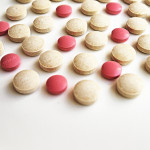The drugs commonly used Chicago sedation dentistry are classified into two groups: intravenous agents and inhalational agents. Intravenous anesthetics are drugs to be administered intravenously can produce analgesia, sedation or hypnosis may even produce a continuous state of general anesthesia. Within this group we can name : Barbiturates: These are drugs derived from barbituric acid, which was synthesized by Conrad and Guthzeith in 1882, the most used of these drugs have been thiopental, the tiomilal and Methohexital. As for his Pharmacokinetics noted that this drug can produce central nervous system level hypnosis rapid short, 5 to 10 minutes, the effects are dose dependent and can range from mild sedation to unconsciousness.

By: epSos .de
Can trigger apnea, no small dose produces analgesia and hyperalgesia. As for its effect on cardiovascular system level we note that barbiturates cause vasodilation and myocardial depression. The magnitude of the effect depends hemodynamic myocardial conditions and intravascular volume basis. The usual dose of thiopental, which is the most commonly used barbiturate in our midst is 2-7 milligrams of the drug per kilogram of patient weight (mg / Kg.) Regarding the Pharmacokinetics, we can say that the beginning of the action is fast, are very soluble and are distributed in the brain and other organs well perfused in about 30 seconds, then is distributed in the muscles and the skin resulting in a significant decrease in plasma and brain. redistribution half-life is approximately three minutes for thiopental. elimination half-life exceeds 12 hours. Is hepatic biotransformation is renal excretion. Adverse effects: these are usually allergic reactions that can reach even to anaphylaxis, but these are extremely rare, the typical manifestations include bronchospasm and cardiovascular collapse, which should be treated with adrenaline. Other reactions are most common in the hives that can go up the flush, tachycardia is another manifestation. Thiopental extravascular infiltration, causes tissue damage sometimes local arterial injection can cause tissue necrosis frank. The use of relatively dilute solutions, minimizes this complication. Ketamine (17): Another of the intravenous anesthetic agents often used in our environment is what ketamine, it is derived from the Phencyclidine, which causes a dissociated state characterized by mental disconnection and profound analgesia environment. Pharmacodynamics intravenous administration of high doses quickly produce unconsciousness, high muscle tone and uncoordinated eye movements and exaggerated. The onset of apnea is less likely with ketamine with thiopental, and often is in keeping with the airway, but they reflect not entirely regular, so it is possible the appearance of a vacuum, which is a phenomenon of liquid content passing respiratory tree, such liquid may be of gastric blood product any surgical procedures in the mouth, etc.. Ketamine alone is not enough for the surgery of the abdominal cavity, but is used extensively in brief but painful interventions in dentistry frequently used for sedation in children. It is also very useful in the induction in children and uncooperative patients without intravenous access, as can be administered intramuscularly. Another of its pharmacodynamic properties make it useful in other circumstances. Cardiovascular system there is usually an increased heart rate and blood pressure secondary to activation of the sympathetic nervous system, appears to be less hypotensive than other inducing agents, so is valuable in inducing hypovolemic patients. its metabolites are direct myocardial depressants, making it possible to find hypotension in patients where sympathetic reserves are depleted.